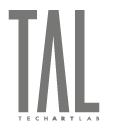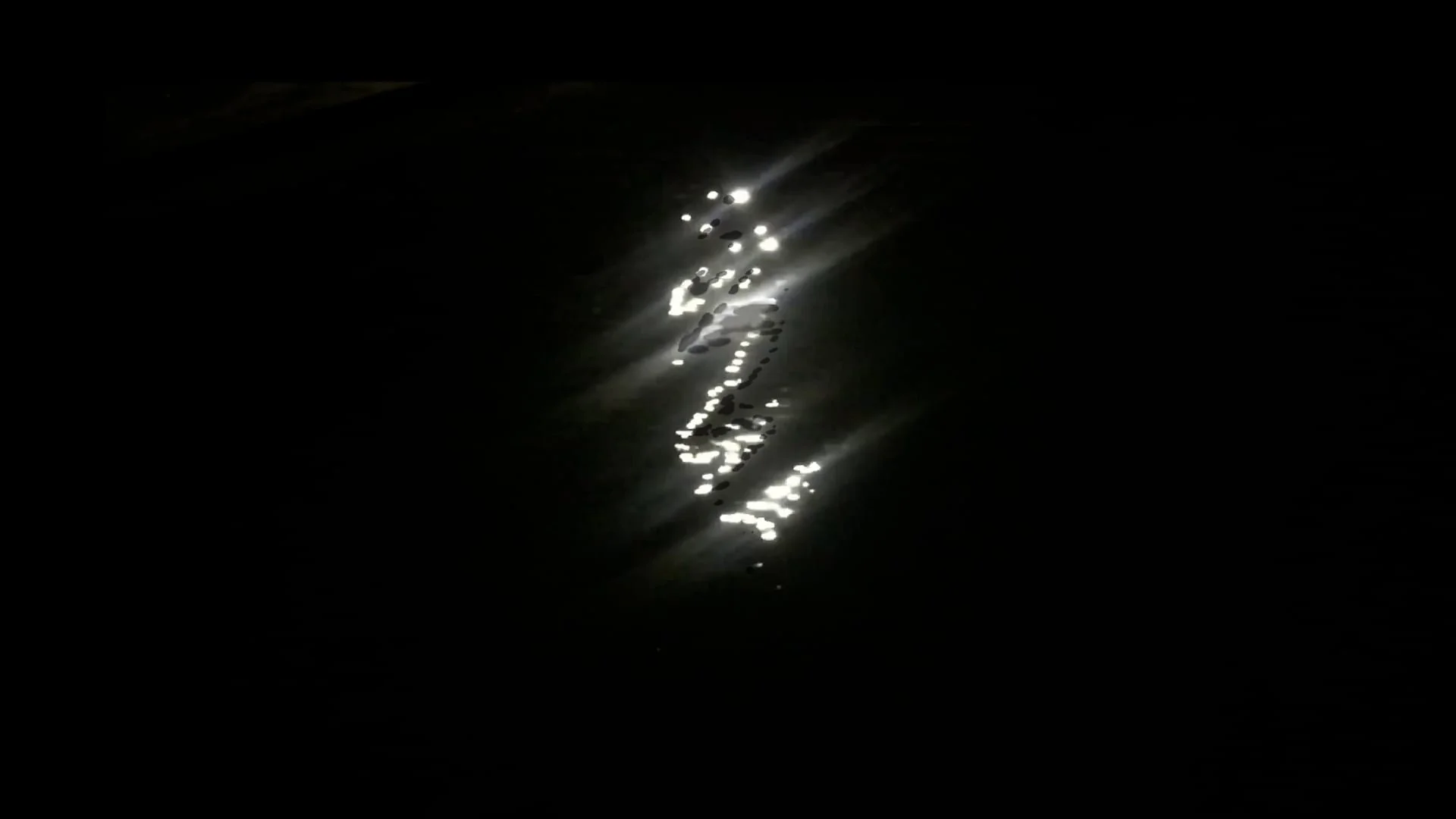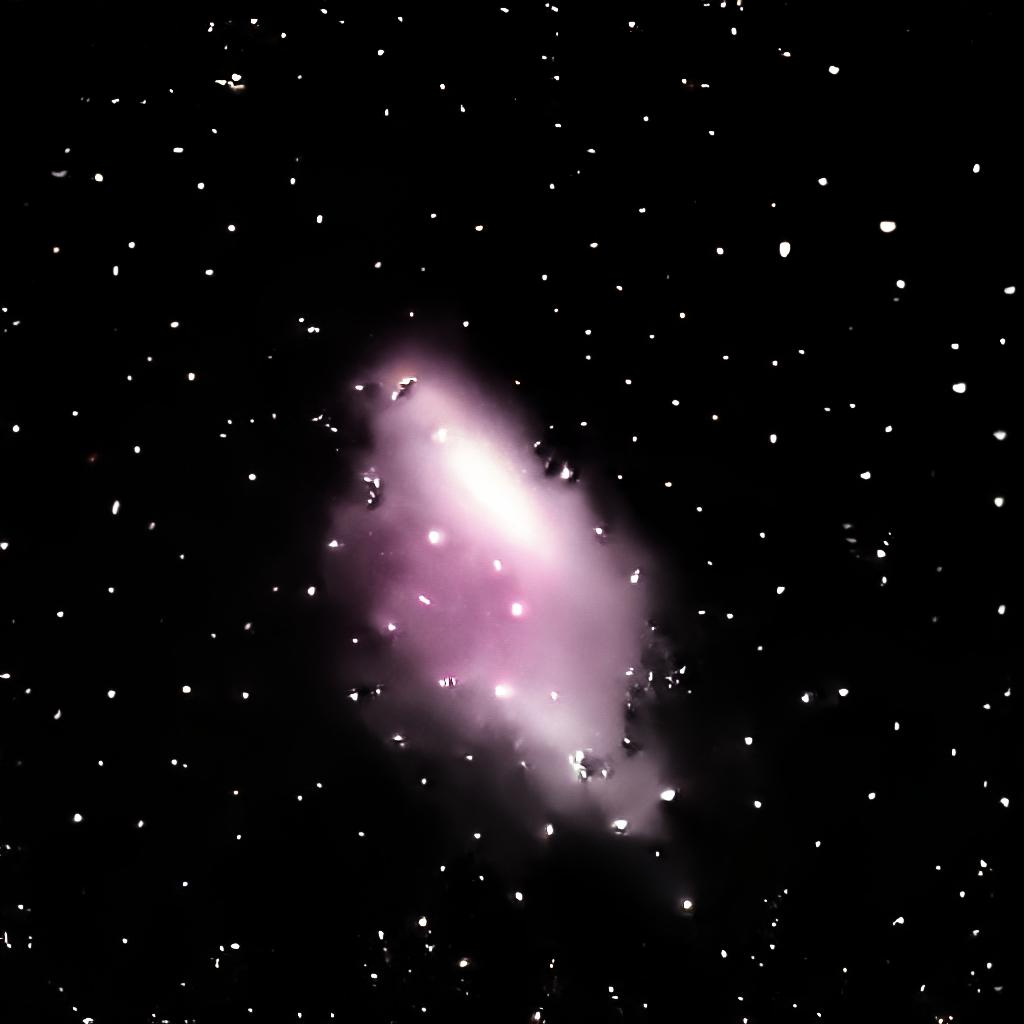(PT)
“Though nothing will keep us together We could steal time just for one day We can be heroes forever and ever What d'you say?” David Bowie[1]
Noclip[2] apresenta trabalhos de Auguste Montini, bellavirus, Fernanda Schmidt, Jerônimo de Moraes, Lídice, Manoela Morgado, Patrícia Abbott, Romulo Barros, Taís Koshino, Theo Tajes e Thiago Granai, participantes do curso e grupo de estudos TECH: Arte e Tecnologia, dirigido por Gabriela Maciel e Mariana Destro, uma colaboração entre a TAL e a GUAVA.
Aqui, abordamos a internet tanto como um meio de criar uma rede de artistas quanto como suporte para um amplo conjunto de práticas estéticas e conceituais. Inspirades pelas ideias dos escritos de Hito Steyerl sobre política da imagem, tais como capitalismo acelerado, sistema de arte como máquina de exploração de mão de obra, violências estruturais, encantamento e prazer e o fracasso dos discursos pós-coloniais e modernistas, produzimos, neste ano, uma série de trabalhos em mídias digitais, como imagens geradas por Inteligência Artificial, performances, selfies, modelagem 3D, NFTs, fotos e vídeos alterados digitalmente. Nesse sentido, desejamos revelar vislumbres de futuros perdidos[3] que a pós-modernidade nos permite somente sonhar.
1. “Em 1977, a história humana chegou a um ponto de inflexão. Os heróis morreram, ou, mais precisamente, desapareceram. Não foram mortos pelos inimigos do heroísmo, mas foram transferidos para outra dimensão, dissolvidos, transformados em fantasmas. (...) Foi o ano em que os heróis desapareceram, transmigrando-se do mundo da vida física e da paixão histórica para o mundo da simulação e do estímulo nervoso.” Franco “Bifo” Berardi in STEYERL, Hito. The Wreckage of the Screen (2012).
2. Noclip significa voar ou atravessar as paredes. É oriundo de um cheat de videogame que permite aos jogadores ver o outro lado. Esse termo também desempenha um papel importante na cultura de internet, ou internet lore.
3. Mark Fisher desenvolve em seu trabalho a ideia de que a cultura moderna é assombrada por vislumbres do futuro criados pela modernidade, mas que o neoliberalismo pós-moderno cancelou.
(EN)
“Though nothing will keep us together We could steal time just for one day We can be heroes forever and ever What d'you say?” David Bowie[1]
Noclip[2] features works by Auguste Montini, bellavirus, Fernanda Schmidt, Jerônimo de Moraes, Lídice, Manoela Morgado, Patrícia Abbott, Romulo Barros, Taís Koshino, Theo Tajes, and Thiago Granai, all participants in the TECH: Art and Technology course and study group, directed by Gabriela Maciel and Mariana Destro, a collaboration between TAL and GUAVA.
Here, we discuss the internet as both a means of carrying out an artist network and as a medium for a diverse set of aesthetic and conceptual practices. Inspired by ideas from Hito Steyerl's writings on the politics of the image, such as accelerated capitalism, the art system as a labor extraction mine, structural violences, enchantment and pleasure, and the wreck of postcolonial and modernist discourses, we produced a diverse range of digital imagery this year, including AI-generated images, media-based performances, selfies, 3D modeling, NFTs, and digitally manipulated photography and video. In this way, we desire to reveal glimpses of the lost futures[3] that postmodernity only allows us to dream of.
1. “In 1977, human history reached a turning point. Heroes died, or, more accurately, they disappeared. They were not killed by the foes of heroism, but were transferred to another dimension, dissolved, transformed into ghosts. [...] It was the year when heroes faded, transmigrating from the world of physical life and historical passion into the world of simulation and nervous stimulation.” Franco “Bifo” Berardi In STEYERL, Hito. The Wreckage of the Screen (2012).
2. Noclip means to fly through walls. It is derived from a video game cheat that allows players to see the other side. It also plays an important role in internet culture, or internet lore.
3. In his work, Mark Fisher develops the idea that modern culture is haunted by glimpses of the future created by modernity, but that postmodern neoliberalism has canceled.
1 Auguste Montini. taxidermia_01, 2021. Image (color). 3304 x 2476 px
2 Auguste Montini. taxidermia_02, 2021. Image (color). 3310 x 2466 px
3 Auguste Montini. debris displacement, 2021. 3D model. Dimensions variable
4 Auguste Montini. debris displacement 2, 2022. 3D model. Dimensions variable
bellavirus. Serpent-Screen, 2021. HD video (black and white, sound). 0:08 min loop
bellavirus. Espírito, 2022. HD video (color, sound). 1:22 min
bellavirus e Patrícia Abbott. Morrer é o único real, 2022. HD video (color, sound). 5:36 min
Fernanda Schmidt. Travessia, 2022. HD video (color, sound). 3:47 min
Jerônimo de Moraes. Scrolling landscapes 1, 2021. HD video (color, silent). 0:21 min
Jerônimo de Moraes. Scrolling landscapes 2, 2021. HD video (color, silent). 0:55 min
Lídice. khárites, 2022. Animated GIF. 720 x 1080 px
Lídice. jogo de damas, 2022. HD video (color, sound). 1:47 min
Manoela Morgado. DDD (Água), 2021. Image (color). Dimensions variable, 1:1
Manoela Morgado. MY DREAMS TODAY, 2022. Image (color). Dimensions variable, 1:1
1 Patrícia Abbott. Blue Hours, 2021. Image (color). Dimensions variable, 1:1
2 Patrícia Abbott. Blue Hours II, 2021. Image (color). Dimensions variable, 1:1
3 Patrícia Abbott. Carbono, 2022. Image (color). Dimensions variable, 1:1
4 Patrícia Abbott. Carbono II, 2022. Image (color). Dimensions variable, 1:1
Romulo Barros. Exsicata, 2021. 11 Animated GIFs. 478 x 268 (each)
Taís Koshino. Mapa invisível, 2022. HD video (color, sound). 2:28 min. Soundtrack: Kim Martins
Taís Koshino. amanhecer, 2022. Image (color). Dimensions variable, 1:1
Theo Tajes. Selfie, 2021. HD video (color, sound). 0:32 min
Thiago Granai. Modern Obelisk, 2022. Image (color). Dimensions variable, 16:9
Thiago Granai. Silver Platter, 2022. HD video (black and white, silent). 0:27 min loop
Noclip
AUGUSTE MONTINI - BELLAVIRUS - FERNANDA SCHMIDT - JERÔNIMO DE MORAES - LÍDICE - MANOELA MORGADO - PATRÍCIA ABBOTT - ROMULO BARROS - TAÍS KOSHINO - THEO TAJES - THIAGO GRANAI
Curadoria de Gabriela Maciel e Mariana Destro
Curated by Gabriela Maciel and Mariana Destro
Auguste Montini (Maringá, 1995) vive e trabalha em Maringá, Paraná. É artista multimídia graduade em Artes Visuais pela Universidade Estadual de Maringá (UEM). Sua prática artística está focada na relação entre identidade e tecnologia, impermanência e decadência, desenvolvendo trabalhos em fotografia, performance e vídeo. Auguste Montini (Maringá, 1995) lives and works in Maringá, Paraná. They're a multimedia artist with a degree in Visual Arts from the State University of Maringá (UEM). Their artistic practice is focused on the relationship between identity and technology, impermanence and decay, and they're developing work in photography, performance, and video.
Bella (Rio de Janeiro, 1988) é mãe e artista transdisciplinar e multimídia, com mestrado em Música, na área de Sonologia (USP). Investiga processos energéticos através da matéria, do som e da luz, com interesse pelo resgate de conhecimentos não validados, e da relação com a imaterialidade. Já assumiu diversas identidades, e atualmente se divide entre bellacomsom e bellavirus. bellavirus (2020) cria imagens digitais, vídeos e NFTs. Participou da exposição da FEMINU/Gambiarra Near pela Mintbase, no Cryptovoxels (2022). Bella (Rio de Janeiro, 1988) is a mother and a transdisciplinary and multimedia artist, with a master's degree in Music, in the field of Sonology (USP). She investigates energetic processes through matter, sound, and light, with an interest in the rescue of non-validated knowledge, and the relationship with immateriality. She has undertake several identities and currently divides herself between bellacomsom and bellavirus. bellavirus (2020) creates digital images, videos, and NFTs. She was part of the FEMINU/Gambiarra Near exhibition by Mintbase, at Cryptovoxels (2022).
Fernanda Schmidt (Rio de Janeiro, 1976) é artista visual e designer gráfica e trabalha com símbolos, imagens e videos. Há 4 anos iniciou sua pesquisa em trabalhos de arte onde experimenta com a reflexão e o ritmo. Seja em vídeo ou objetos, a artista transita entre o físico e o digital. Sua pesquisa atual aborda temas urbanos de isolamento e exposição, partindo dos movimentos do indivíduo contemporâneo em relação ao seu entorno. Participou das exposições coletivas “i_material”, na Casa Voa (2018), e “Temporal”, online (2020). Fernanda Schmidt (Rio de Janeiro, 1976) is a visual artist and graphic designer working with symbols, images, and videos. Four years ago, she began experimenting with reflection and rhythm in her artistic practice. Whether in video or objects, the artist transits between the physical and the digital. Her current research approaches urban themes of isolation and exposure, starting from the movements of the contemporary individual concerning his surroundings. She participated in the group exhibitions "i_material", at Casa Voa (2018), and "Temporal", online (2020).
Jerônimo de Moraes (Rio de Janeiro, 1980) é um artista multimídia que se utiliza primordialmente de elementos narrativos e tecnicamente explora os limites entre imagem em movimento e imagem estática misturando linguagens analógicas e digitais no seu processo de produção. Jerônimo de Moraes (Rio de Janeiro, 1980) is a multimedia artist who primarily uses narrative elements and explores the technical boundaries between still and moving images by mixing analog and digital languages in his artistic production process.
Lídice (Brasília, 1996) nasceu, cresceu e trabalha no Distrito Federal. Artista queer, pesquisa e experimenta, em múltiplas mídias e também com o corpo, experiências, identidades e ritos. Cursa graduação em licenciatura em Artes Visuais (UnB). Sua trajetória se faz em espaços pelo Distrito Federal e entorno, como no Espaço Piloto, exposição “Palavra, animal não doméstico” (2019), na galeria A Pilastra, exposição “Inferninho Katya Flavya 2.0” (2019) e na GUAVA, exposição “lista” (2019). Recentemente tem exposto na plataforma Teia. Lídice (Brasilia, 1996) was born, grew up, and works in the Federal District (Brazil). A queer artist, they research and experiment in multiple media and also with the body, experiences, identities, and rites. They're currently studying for a degree in Visual Arts (UnB). Their body of work has been exhibited in art spaces throughout the Federal District and surroundings, such as in Espaço Piloto, in the exhibition “Palavra, animal não doméstico” (2019), in the gallery A Pilastra, in the exhibition ”Inferninho Katya Flavya 2.0” (2019) and in GUAVA, in the exhibition ”lista” (2019). Recently they've been exhibiting on the Teia platform.
Manoela Morgado (Brasília, 1995) é artista visual e designer. Através de diferentes mídias, busca explorar o limite do simbólico e as relações entre imagem e narrativa. Como artista, já participou de residências internacionais e expos seus trabalhos em galerias na Argentina, Uruguai e Dinamarca. Manoela Morgado (Brasilia, 1995) is a visual artist and designer. Through different media, she seeks to explore the limit of the symbolic and the relationship between image and narrative. As an artist, she has participated in international residencies and exhibited her work in galleries in Argentina, Uruguay and Denmark.
Patrícia Abbott (Brasília, 1987) vive e trabalha em Brasília. É artista visual, formada em Ciências Sociais pela Universidade de Brasília. Sua produção poética explora temas como efemeridade, transformação e materialidade por meio de técnicas diversas, como tecnologias emergentes, especialmente Inteligência Artificial e Realidade Virtual, além de fotografia, colagem, monotipia, pintura, gravura e desenho. Dentre exposições recentes, destacam-se “Romper a Superfície é Abrir um Rio para Dentro” (2022), no Espaço Fonte, São Paulo, e o Primeiro Prêmio Vozes Agudas, na Galeria Karla Osório (2021), Brasília. Patrícia Abbott (Brasilia, 1987) lives and works in Brasilia. She is a visual artist with a degree in Social Sciences from the University of Brasilia. Her poetic work explores themes such as ephemerality, transformation, and materiality through various means and techniques, such as emerging technologies — especially Artificial Intelligence and Virtual Reality — as well as photography, collage, monotype, painting, engraving, and drawing. Among recent exhibitions are “Romper a Superfície é Abrir um Rio para Dentro” (2022), at Espaço Fonte, Sao Paulo, and the “First Vozes Agudas Award”, at Galeria Karla Osório (2021), Brasilia.
Romulo Barros (Medeiros, 1995) nasceu e cresceu no interior de Minas Gerais, um meio social onde os padrões de comportamento culminam na repetição das histórias locais, processo em que todos acabam dentro da mesma trouxa. Observa essas experiências e as insere em sua produção. Questionando sempre a própria identidade, procura externar a sua própria perspectiva, de um ser que busca, em si e em sua memória e ancestralidade, uma relação de afeto, vínculo, fluxo e refluxo. Atualmente tem uma produção artística que perambula pelos campos da pintura, instalação, escultura e gravura. Romulo Barros (Medeiros, 1995) was born and raised in the countryside of Minas Gerais, a social environment where behavioral patterns culminate in the repetition of local stories, a process in which everyone ends up in the same bundle. They observe these experiences and insert them into their production. Always questioning their own identity, they try to express their perspective, of a being that searches, in themselves and their memory and ancestry, a relationship of affection, bonds, flux and reflux. Currently, they have an artistic production that wanders through the fields of painting, installation, sculpture, and engraving.
Taís Koshino (Brasília, 1992) é artista visual, pesquisadora e curadora. Sua prática e pesquisa são ao redor do desenho e suas possibilidades de abarcar a imprecisão e a impermanência. Explora essas questões em diversas mídias e suportes físicos e digitais. Seus desenhos já foram impressos em diversas publicações e coletâneas nacionais e internacionais. Participou de exposições, feiras e mostras em diversas cidades do Brasil e fora. Atualmente, é mestranda no Programa de Pós-Graduação em Artes Visuais da Universidade de Brasília. Seu trabalho mais recente, jardim, foi exposto na Art Basel Miami 2021. Taís Koshino (Brasilia, 1992) is a visual artist, researcher, and curator. Her artwork revolves around drawing and its possibilities of containing within itself imprecision and impermanence. She explores these matters in several media and physical and digital supports. Her drawings have been printed in several national and international publications and collections. She has participated in exhibitions, fairs, and shows in several cities in Brazil and abroad. Currently, she is a master's student in Visual Arts at the University of Brasilia. Her most recent work, jardim, was exhibited at Art Basel Miami 2021.
Theo Tajes é artista visual, fotógrafo e diretor de cinema. Seu trabalho transita entre a ficção e o documentário, muitas vezes misturando os dois gêneros, geralmente abordando temas como memória, identidade, gênero e questões sociais. Theo publicou/exibiu trabalhos no Brasil, Itália, Holanda, Croácia e Islândia. Theo Tajes is a visual artist, photographer and film director. His work shifts between fiction and documentary, often mixing the two genres, usually addressing issues regarding memory, identity, gender and social issues. Theo published/exhibited works in Brazil, Italy, Netherlands, Croatia and Iceland.
Thiago Granai (Brasília, 1997) é artista visual graduado em Artes Visuais pela Universidade de Brasília (UnB). Produz vídeos, fotografias, textos e esculturas digitais através, principalmente, de apropriação de recursos encontrados na internet. Atualmente assina a curadoria da GUAVA, galeria online dirigida por artistas. Thiago Granai (Brasilia, 1997) is a visual artist graduated in Visual Arts from the University of Brasilia (UnB). He produces videos, photographs, texts, and digital sculptures, mainly through the appropriation of resources found on the internet. He is currently the curator of GUAVA, an online artist-run gallery.


























































